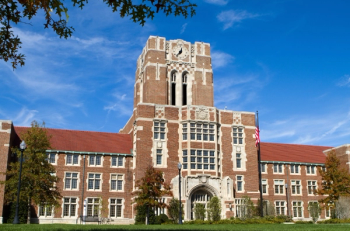
In a recent study from the Autonomous University of Puebla (BUAP), scientists studied how excited-state proton transfer based fluorescence works with Kaempferol powder and different solutions.

In a recent study from the Autonomous University of Puebla (BUAP), scientists studied how excited-state proton transfer based fluorescence works with Kaempferol powder and different solutions.

Scientists from the Beijing Technology and Business University in Beijing, China recently evaluated the capabilities of ceramide nanoemulsions (NEs) using confocal Raman spectroscopy.

In a new study, scientists are investigating Raman spectroscopy as a technique for monitoring postmenopausual osteoporosis.

Tessa Calhoun, PhD, an associate professor of biochemistry & cellular and molecular biology and chemistry at the University of Tennessee – Knoxville, discusses her group’s most recent work employing the optical technique, second harmonic scattering (SHS), to probe how living bacterial membranes uptake and transport small molecules, including antibiotics.

A recent study from Jagiellonian University examined how spectroscopic techniques can aid in the detection of pancreatic cancer.

Peter M. Carlson will take over as CEO of Spectral AI, replacing Wensheng Fan.

A research team from Marquette University recently proposed a new machine learning model that could improve cancer diagnosis by analyzing the diffuse reflectance spectroscopy (DRS) better.

Juergen Popp of the Leibniz Institute of Photonic Technology presented at Pittcon 2024 about how artificial intelligence (AI) can help scientists with tumor removal processes.

A R&D chemist at Inorganic Ventures held a presentation at Pittcon about detecting toxic metals in hemp samples using inductively coupled plasma–optical emission spectroscopy (ICP–OES).

A recent study published in Advanced Photonics looks at three-dimensional (3D) imaging of cells and tissue using phase-modulated stimulated Raman scattering tomography (PM-SRST).

A team of scientists from the Masschusetts Institute of Technology are combining Raman spectroscopy with holo-tomography to monitor early embryonic development.

Boris Mizaikoff of the University of Ulm recently held a presentation on how analyzing a subject’s exhaled breath can help identify who is suffering from long COVID-19.

Boris Mizaikoff of the University of Ulm in Germany held a presentation on how mid-infrared spectroscopy techniques and exhaled breath analysis can help detect diseases like gastric cancer.

This interview with Pola Goldberg Oppenheimer of the University of Birmingham highlights new research her team is working on that includes a Raman-based system for detecting early traumatic brain injuries.

Scientists from the United Kingdom recently created a Raman spectroscopy-based system for detecting early signs of traumatic brain injury (TBI) in patients.

Scientists recently tested a new means of detecting early-stage liver cancer using surface-enhance Raman spectroscopy (SERS).

In a new study, scientists have created a fluorescence chemo sensor to selectively determine histamine in human plasma samples.

A group of Brazilian scientists tested a new means of testing for COVID-19 using a combination of Vis-NIR spectroscopy and machine learning algorithms.

Using single-cell inductively coupled plasma mass spectrometry (SC-ICP-MS), scientists from Kanazawa, Japan created a new method for detecting cadmium in marine phytoplankton.

Ishan Barman, the 2023 recipient of the Coblentz Society Clara Craver Award, held a plenary session during SciX that focuses on transformative biophotonics in disease detection and monitoring.

The Coblentz Society created the Clara Craver Award to recognize young individuals who have made significant contributions in applied analytical vibrational spectroscopy. The work may include any aspect of infrared (IR), terahertz (THz), or Raman spectroscopy in applied analytical vibrational spectroscopy. This year’s recipient, Ishan Barman, is an Associate Professor in the Department of Mechanical Engineering at the Johns Hopkins University with joint appointments in Oncology and Radiology and Radiological Science.

To effectively classify tobacco stems and impurities, a group of scientists from Jiangsu, China used hyperspectral superpixels to separate classify compounds and avoid the influence of interference fringes.

A group of scientists from the University of Wrocław and the University of Innsbruck studied the relationships between aliphatic ketones and water molecules in various environments.

Scientists from the Amirkabir University of Technology in Tehran, Iran, used laser-induced fluorescence (LIF) spectroscopy to analyze opium and hashish, in order to achieve a novel method of drug analysis.

A team of scientists created a portable infrared attenuated total reflection (IR-ATR) spectrometer and tested its food analysis capabilities against similar systems.